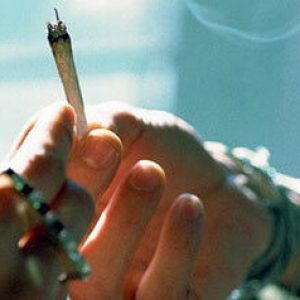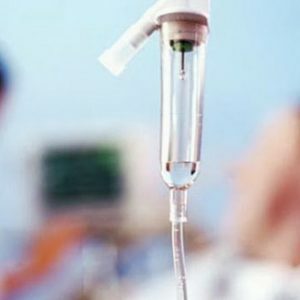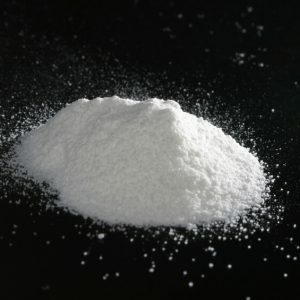Hashish addiction: signs, consequences, treatment

Hashish( "hay, grass" -pers.) Is a collective term adopted in European literature, including a number of products made from Indian( or American, weaker) hemp, which includes cannabis-resinous substance.Has a pronounced narcotic effect due to tetrahydrocannabinols( THC).Hemp, growing on our territory, does not have this effect.The crushed leaves of this plant are ground into a powder, then pressed.
Other names are marijuana( weaker), ganja, charras, anasha, hurrus, gunya, kafur, etc.Most hashish is produced in Afghanistan.
Table of contents: Methods of application and dose Effects of hashish per person Overdose Development of hashish addiction Complications of hashish addiction Treatment of abuse of hashishThe history of this drug is thousands of years old.Hashish has been the subject of religious rituals in India for many centuries.In countries where cannabis is grown and hashish is produced, the number of consumers reaches 60% among men of active age.Most often, we are talking about Muslim states, in which alcohol is prohibited.
Note : hashism is the most common form of drug addiction in the world.
Dosage and administration of
Hash is smoked in hookahs, mixed with tobacco, swallowed in the form of pills, chewed( bang), added to food seasonings, brewed as a drink, or an extract is prepared.As measures, the measures "bash" and "joint" are used.Cigarettes are added hashish, the size of a pea, crushed and mixed with tobacco.Sometimes resin is used in the smoking mixture.
The initial dose giving the drug effect is 50 mg THC per 1 kg of human body weight( according to AG Hoffmann).The pronounced effect occurs at 150-200 mg per 1 kg.A higher dose of 350-400 mg per 1 kg causes impaired consciousness and hallucinations.
The effect of hash on humans
The fiction literature contains many colorful and imaginative descriptions of the sensations of a person under the rule of hashish.His experiences described in the XIX century, the famous French poet S. Baudelaire( "Searching for Paradise").Russian scientist S. Korsakov, made a similar description, based on the impressions of the psychologist L. Lange, who conducted hashish trials on himself.
The effect of hash is due to the expected effect.Hence the development of both euphoria and negative sensations.
Operating phases:
-
 I phase. In 2-3 minutes after the beginning of smoking, most people have anxiety and unreasonable fear, but not all.These sensations are more clearly observed in the initial consumers.The more experienced ones already know how to adjust themselves accordingly, and avoid negative episodes.Sensations and perceptions sharpen sharply.The initial period lasts about 5-10 minutes.
I phase. In 2-3 minutes after the beginning of smoking, most people have anxiety and unreasonable fear, but not all.These sensations are more clearly observed in the initial consumers.The more experienced ones already know how to adjust themselves accordingly, and avoid negative episodes.Sensations and perceptions sharpen sharply.The initial period lasts about 5-10 minutes. - II phase.( 10-20 minutes after smoking).Developing complacency, ease of thought, pleasant relaxation.The mood is comfortable, there is cheerfulness, laughter, often unreasonable.Gradually formed a modified perception of space, light sensations, sounds, smells.The course of the flow of time is disrupted, the body seems to be changing in size.There is a false idea about the world around him, colors, proportions change.External noise can be perceived by music( illusions).Often there is sexual arousal.At the end of the phase, the integrity of the perception of the world is violated.Thoughts and sensations become steep, accelerated, emotionally colored.Consciousness begins to narrow.If smoking occurs in a group, then there is an original variant of communication "through a neighbor", not directly.Emotions are quickly induced.For example, laughter, without awareness of the reasons, applies to everyone.
- III phase. It can already be seen as manifestations of obvious signs of intoxication.In the perception of paradoxicality appears, thinking becomes incoherent, there are elements of delirium with hallucinatory experiences.There is a stratification of emotions and thoughts.Against the background of serious reflection, a person can laugh without reason.
- IV phase. The excitement subsides.A "brutal" famine is developing.The patient can eat( literally - swallow) a lot of food and fluids.Consciousness clears up, but there is a retardation and apathy.Gradually the person falls asleep.Restless sleep lasts about 12 hours.After awakening, the feeling of hunger and thirst is still strong.
In hashish intoxication, the patient has reddening, or vice versa, blushing of the skin.The sclera of unnaturally bright eyes and eyelids are red, the pupils are dilated, sometimes unevenly .There is a strong thirst on the background of dryness of the mucous membranes of the mouth, esophagus.Pulse beats about 100 per minute, breathing excursions can reach up to 30. There is a strong hunger in the background of nausea.Sometimes - vomiting.In the fingers of the hands - a shiver, unsteady gait, shaky.Arterial pressure has a tendency to increase.
Note: As the intoxication builds up, body temperature decreases, and sweating appears.There may be acute venous insufficiency( collapse).
Overdose
This condition develops:
-
 sharply dilated pupils, without reaction to light stimulus;
sharply dilated pupils, without reaction to light stimulus; - pronounced redness of the face;
- frequency of heart rate increases to 120-130 per minute;
- lifting the upper figures of blood pressure to 150-170 mm Hg.P.
- trembling whole body, coordination of movements disturbed;
- Collapse state, stunned, stupor and coma.
Mental changes - a clinic of acute psychosis develops with pronounced excitement, confused consciousness, incoherent replicas of .The patient can be aggressive, somewhere to break away.Contact with him is broken, does not respond to questions, or does not understand them.There is an option in which a drug addict stiffens in one pose.This condition can last several hours, or days.The way out of it is very heavy, with pronounced asthenic manifestations, about 2-3 weeks.The memory of events is partially lost.In this variant, an epileptic seizure may occur.
Please note: an overdose of hash can cause acute psychosis in the person who first used it.
Developing hash addiction
In the environment of medical scientists for a long time there was a debate about whether hash causes dependence and whether after his long reception there is an abstinence syndrome.Gradually, after clinical observations of people who abused hashish, the stages of hashish dependence, abstinence and complications of this disease were described.
If the patient takes cannabis 1-2 times during the week, then the progress of the disease is not observed.He willingly uses alcohol separately, and hashish uses to get sensations, etc.
With the continuation of the drug, the desire to repeat it gradually and in large doses is gradually emerging.There are signs of addiction and dependence.
Is formed hashish addiction:
-
 I stage .Characterized by the withdrawal of the first phase of intoxication - fear, and mitigation of the 4th.Somatic manifestations are erased - redness, trembling, relaxation.Smoking becomes systematic.Hashchist begins to actively look for the next dose.An obsessional( psychic) attraction is formed.This stage lasts up to 2 years.
I stage .Characterized by the withdrawal of the first phase of intoxication - fear, and mitigation of the 4th.Somatic manifestations are erased - redness, trembling, relaxation.Smoking becomes systematic.Hashchist begins to actively look for the next dose.An obsessional( psychic) attraction is formed.This stage lasts up to 2 years. - II step. A physical dependence is formed.A characteristic feature is a change in the form of intoxication.The deafening of consciousness that is characteristic of novice drug addicts is leaving.Expressed in the initial phase, relaxation disappears very quickly.His place is concentrated, active, working capacity.The pace of thinking is accelerating.The patient is laughable, humorous.The 2 nd and 3 rd phases seem to merge into one, at the expense of mitigating the manifestations of oppression.In this case, hashish "works" as a stimulant.This action lasts 1.5 - 2 hours, then a certain decline in activity develops.Perceptual problems and delusions are not very pronounced.Gradually, lethargy comes and keeps until a new dose is received.On this basis, hashists smoke several times a day to stay in the "form".During the day they do not sleep, the night sleep is restored.Tolerance( daily dose) is increasing.The effect is enhanced by the use of warm water.Alcohol in this state is almost not accepted, but if such a fact takes place, then we can talk about polydrug use.
Psychic dependence reaches its apogee.Without a dose, the patient is restless, irritable, dispersed, spiteful, experiencing severe mental discomfort .Without intoxication, depressions come first.Gradual progress of the disease leads to an increase in physical dependence.In addition to mental discomfort, a person who is deprived of the necessary dose experiences a strong physical weakness, which goes only against the background of hashish.
Compulsive attraction( physical) occurs both with abstinence and with remission.
Abstinence develops a long period of time - several months, which is quite long for the drug.Flows in the form of 3 phases. 1 phase of begins 4-5 hours after the last smoking.The patient has dilated pupils, chills with yawning and lethargy, anxiety.Appetite and sleep disappear. 2 phase ( lasts until the day after smoking) is manifested by an increase in the signs described in phase 1.There is marked exaltation, increased blood pressure, palpitations, rapid breathing. Phase 3 adds complaints of chest compression, pain in the heart, spasms, difficulty breathing.The patient feels burning sensation of the skin, crawling.There is a growing compulsion.Patients are whiny and restless.On 3-5 days is likely the appearance of a psychosis of abstinence.The duration of abstinence is from 3 days to a month. - III stage. To reach it, you should take hashish for at least 10 years.Such patients can be met only rarely.Doses of cannabis are falling.The effect of it is only a tonic, acting short term.Then the patients become apathetic and listless.The abstinence is severe, so the hashists are trying not to miss the required smoking of the planned dose.
Complications of hash addiction
Patients gradually develop dementia, exhaustion of the psyche and physical strength, psychopathy, brain damage - encephalopathy, myocardial dystrophy, liver damage, chronic bronchitis and precancerous changes in the cells.The course of the disease is sluggish.
Treatment for the abuse of hashish
 Treatment in a narcological hospital is required at any stage of hashish dependence.
Treatment in a narcological hospital is required at any stage of hashish dependence.
Detoxification therapy is especially needed for people who use hashish for a long time, and in large doses.Complete withdrawal of toxins can take from 3 to 5 days.
Treatment of the brain( nootropics), heart, liver( hepatoprotectors) and neurological complications can last several weeks.
The greatest attention in the therapy of hashism has to be paid to the elimination of mental disorders.Psychotropic substances are used that eliminate the negative consequences of depression, emotional instability, insomnia.
The main type of treatment is psychotherapy .Withdrawal of mental dependence is the pledge of the future healthy life of the addict.After individual and group psychotherapy sessions in the hospital, the psychologists of rehabilitation centers are engaged with patients.
Probably, it is desirable to carry out the encoding.
Early stages of hashish addiction are well treatable and prognostically favorable.Launched forms with pronounced psycho-organic lesions, loss of will, moral concepts lead to frequent relapses of the disease .Those drug addicts who manage to live a long time often face disability.
Alexander Lotin, medical reviewer



